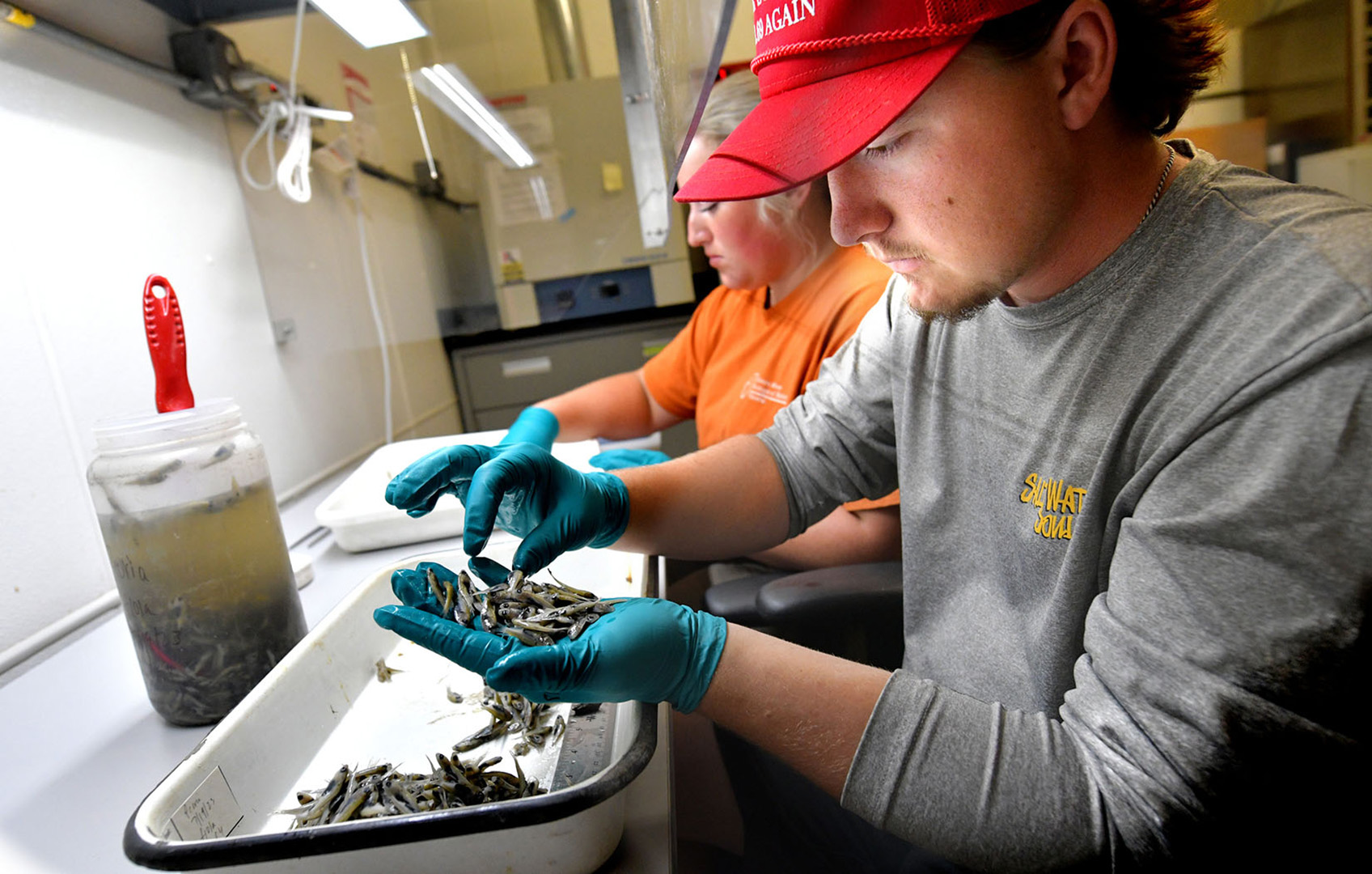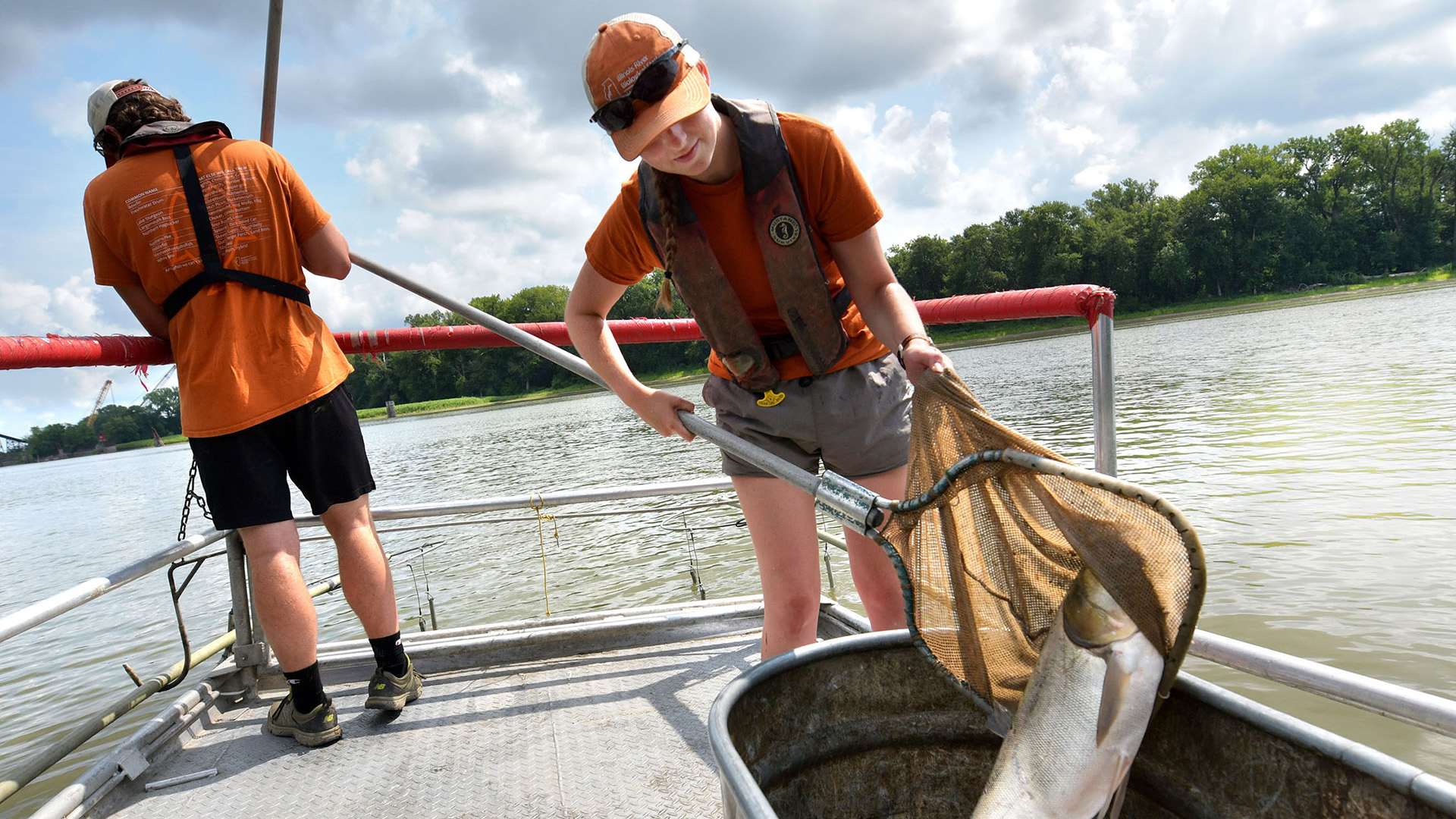For some 150 years, scientists have conducted research on fish and waterfowl populations from biological field stations near Havana
The Illinois River provides a multitude of recreational opportunities. Many like boating and just relaxing on the water. Others love the challenge of catching big fish from these waters or hunting ducks and geese.
The health of the river and the creatures who call it home have been monitored by research scientists going back to 1876. Havana, Illinois is home to two University of Illinois biological field stations, under the direction of the Prairie Research Institute’s Illinois Natural History Survey.
The Illinois River became a subject of researchers’ curiosity when Stephen A. Forbes, known by the National Academy of Sciences as “the founder of the science of ecology in the United States” and the first chief of the Illinois Natural History Survey, chose the Havana sector of the river for his biological investigations some 130 years ago.

That work continues today with the goal of gaining “a thorough scientific knowledge of the whole system of life existing in the waters of this state, with a view to economic as well as educational applications and especially with reference to the improvement of fish culture and to the prevention of progressive pollution of streams and lakes …”
The 273 miles of the Illinois River make up a portion of the Upper Mississippi River Restoration program. The Illinois Natural History Survey works in cooperation with the U.S. Army Corps of Engineers and the U.S. Geological Survey to monitor the likes of invasive carp, native fish species and vegetation, and zebra mussels. Another important role is to aid the Illinois Department of Natural Resources’ ongoing management of big head and silver carp. Other contributors include the U.S. Fish and Wildlife Service and The Nature Conservancy.
These scientists also apply their research efforts to flooding, zoo plankton, and the effects of lead shot on waterfowl populations. Long-term monitoring can show changes and challenges to the ecosystem, which then can be dealt with and hopefully remedied.
A pioneering organization
The research center is the oldest aquatic station in North America. It began as a boat on the river with a rented space in downtown Havana, and stayed that way until around 1940. Around this time, the first brick-and-mortar field station was erected. And thus waterfowl research began at the Forbes Biological station on the Chautauqua Refuge.
The Illinois River Biological Station in Havana was formed in 1990 as a result of the field station staff landing a research grant for the long-term monitoring of the La Grange Reach of the Illinois River, requiring more staff and space than could be housed at the Forbes Station.
While each of these facilities is separate, they work together to build an ongoing library of knowledge about happenings in the Illinois River valley. Decades of specimens and data have been collected and continue to be used and referenced.
One example is the aerial survey data on waterfowl migration, which started with Frank Bellrose in 1948 and continues today. It is the oldest known inventory on waterfowl migration. Looking at the data over time helps the scientists determine how changing climate has altered the migration chronology of birds, which is obviously important to duck hunters.
Starting in 1950, the field stations began studying the reduced population of ducks. Some 75 years ago, there were 81,090 canvasback ducks on the Illinois River. By 1990, that population had dropped to 3,330. While that decline was in part the result of increased industrial and residential sewage affecting the flora and fauna that supported fish populations, and in part due to the silting-in of the lakes due to agriculture, another contributing factor was lead shot poisoning in waterfowl, which had been studied extensively at the Forbes Biological Station.
As a result of those findings, lead shot was banned from ammunition for waterfowl hunting in 1991.
A sportsman’s paradise
Those who have lived in central Illinois for 30 years or more may remember when Emiquon National Wildlife Refuge, representing some 11,122 acres of wetlands, was created back in 1993 from reclaimed agriculture land. Each spring and fall, tens of thousands of birds use Emiquon as a stopover point in their migration. It also contains many species of game fish, making it a haven for sportsmen.
The Emiquon Complex consists of the Emiquon Preserve, more than 6,000 acres owned and managed by the Nature Conservancy, as well as the Emiquon National Wildlife Refuge, consisting of over 2,600 acres of land. These areas offer visitors the opportunity to fish, hike, bird watch and hunt.
Many of the full-time staff working under current Director Jim Lamer are ecologists or specialists in various types of aquatic studies. The invasion of the river by zebra mussels and Asian carp keep the “aquatic nuisance species specialists” busy. Trying to understand the impacts of dams and other river-altering projects also is an ongoing task.
In 2020, the Illinois River Biological Station, IDNR and The Nature Conservancy, along with Whoosh Innovations, began experimenting with a mobile fishway that allows marine life to navigate past barriers such as dams that may not be passable during normal water levels. This specific fishway uses a scanner with artificial intelligence software to identify fish species in real time as they pass through the system. It has the potential to sort species and direct them to different destinations, which may have applications in controlling invasive species such as big-headed carp.
Asian carp are a real threat to other fish species in the river because they are such voracious eaters, leaving little behind for others. An adult silver/big-headed carp, which can grow up to four feet and weigh up to 90 pounds, can eat up to 40% of its body weight every day. One of the methods being used by the station to monitor the carp is electrofishing, which uses a DC current to shock the fish so that fish populations can be monitored and studied more easily.
There is currently a plan to build a new field station, which will have indoor boat and vehicle storage, expanded laboratories. a walk-in freezer, conference room and visitor center, including an aquarium and displays. It will serve as a regional educational facility and represents a partnership between the City of Havana, the University of Illinois and Spoon River College, said Havana Mayor Brenda Stadsholt.
“The proposed plan will have a definite economic impact on the City of Havana and our entire region,” she said.
Additional information about the Illinois River Biological Station and the Forbes Biological Station can be found online at Illinois-river-bio-station.inhs.illinois.edu and at forbes-bio-station.inhs.illinois.edu, respectively.





